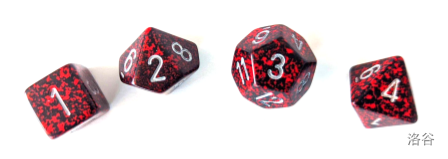#P12981. [GCJ 2022 Qualification] d1000000
[GCJ 2022 Qualification] d1000000
题目描述
While the most typical type of dice have 6 sides, each of which shows a different integer 1 through 6, there are many games that use other types. In particular, a is a die with sides, each of which shows a different integer 1 through . A is a typical die, a has four sides, and a has one million sides.

In this problem, we start with a collection of dice. The -th die is a , that is, it has sides showing integers 1 through . A straight of length starting at is the list of integers , , , . We want to choose some of the dice (possibly all) and pick one number from each to form a straight. What is the longest straight we can form in this way?
输入格式
The first line of the input gives the number of test cases, . test cases follow. Each test case is described in two lines. The firstline of a test case contains a single integer , the number of dice in the game. The second line contains integers , , , , each representing the number of sides of a different die.
输出格式
For each test case, output one line containing Case #x: y, where is the test case number (starting from 1) and is the maximum number of input dice that can be put in a straight.
4
4
6 10 12 8
6
5 4 5 4 4 4
10
10 10 7 6 7 4 4 5 7 4
1
10
Case #1: 4
Case #2: 5
Case #3: 9
Case #4: 1
提示
Sample Explanation
In Sample Case #1, there are multiple ways to form a straight using all dice. One possible way is shown in the image above.
In Sample Case #2, since none of the dice can show an integer greater than , there is no way to have a straight with more than dice. There are multiple ways to form a straight with exactly dice. For example, pick the integers and for both 's and then integers , and for three of the 's to form .
In Sample Case #3, it is possible to form the straight by discarding one and using the 's, , and to get through ; the 's to get through ; and the 's to get and . There is no way to form a straight of length , so this is the best that can be done.
In Sample Case #4, we can only form a straight of length , but we can do so by picking any integer for the we are given.
Limits
- .
Test Set 1 (9 Pts, Visible Verdict)
- .
- , for all .
Test Set 2 (11 Pts, Visible Verdict)
- .
- , for all .
